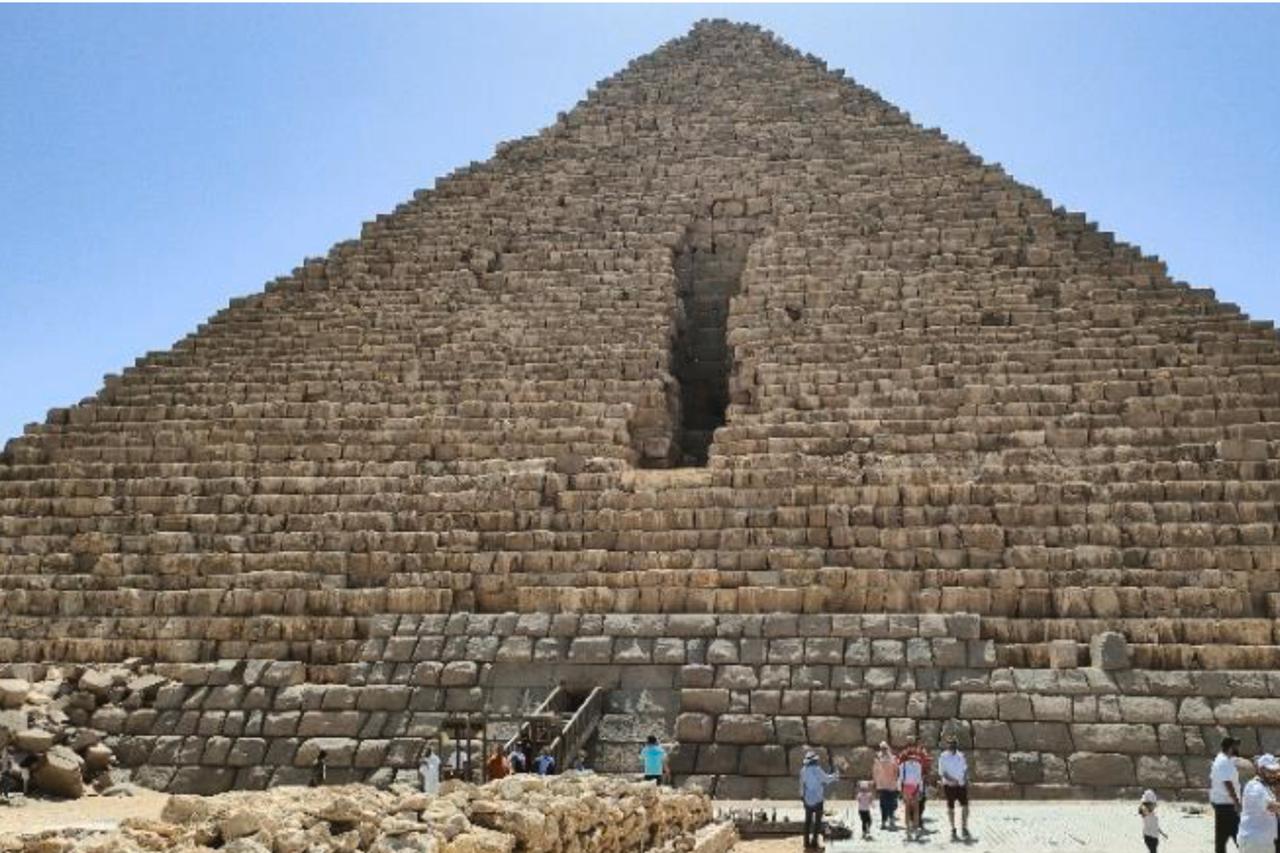
Researchers from Cairo University and the Technical University of Munich (TUM) working with the ScanPyramids project have detected two hidden, air-filled anomalies behind the eastern face of the Menkaure Pyramid at Giza, strengthening a long-standing hypothesis that this side may conceal an additional entrance.
The team reports that combining three nondestructive tests revealed the voids without harming the monument.
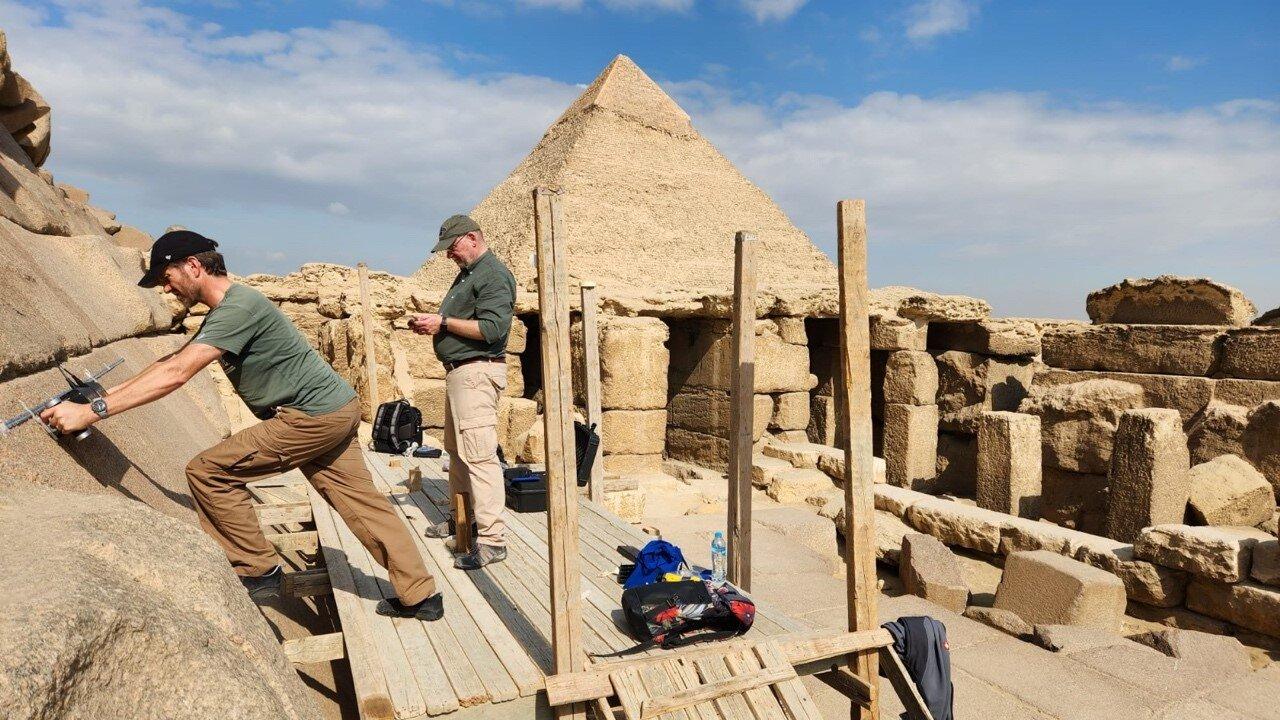
A compact zone of unusually well-polished granite blocks on the pyramid’s east side—about four meters high and six meters wide—mirrors the finishing seen around the only known entrance on the north side.
That visual clue, first raised in 2019, guided a new survey of the more than 60-meter-high pyramid’s lower courses.
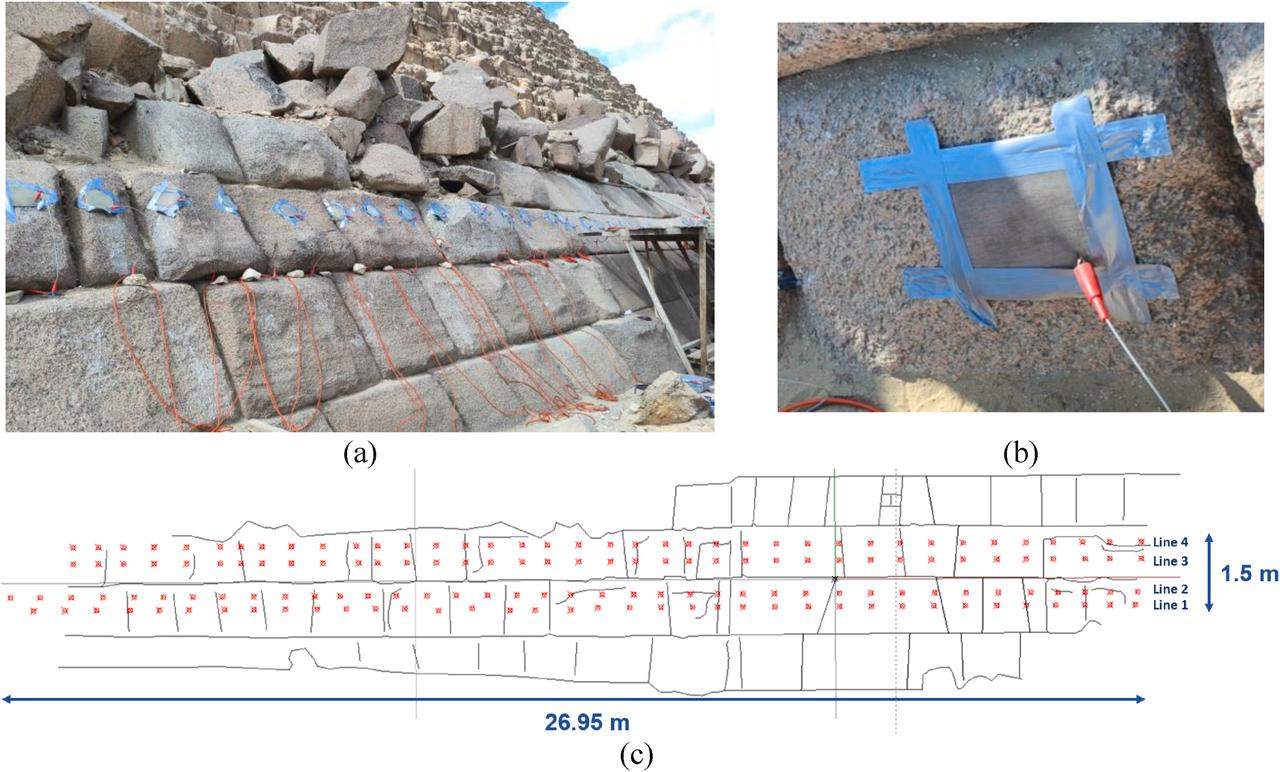
Engineers mapped the area using:
An image-fusion workflow then overlaid the outputs to cross-confirm depths, sizes and shapes.
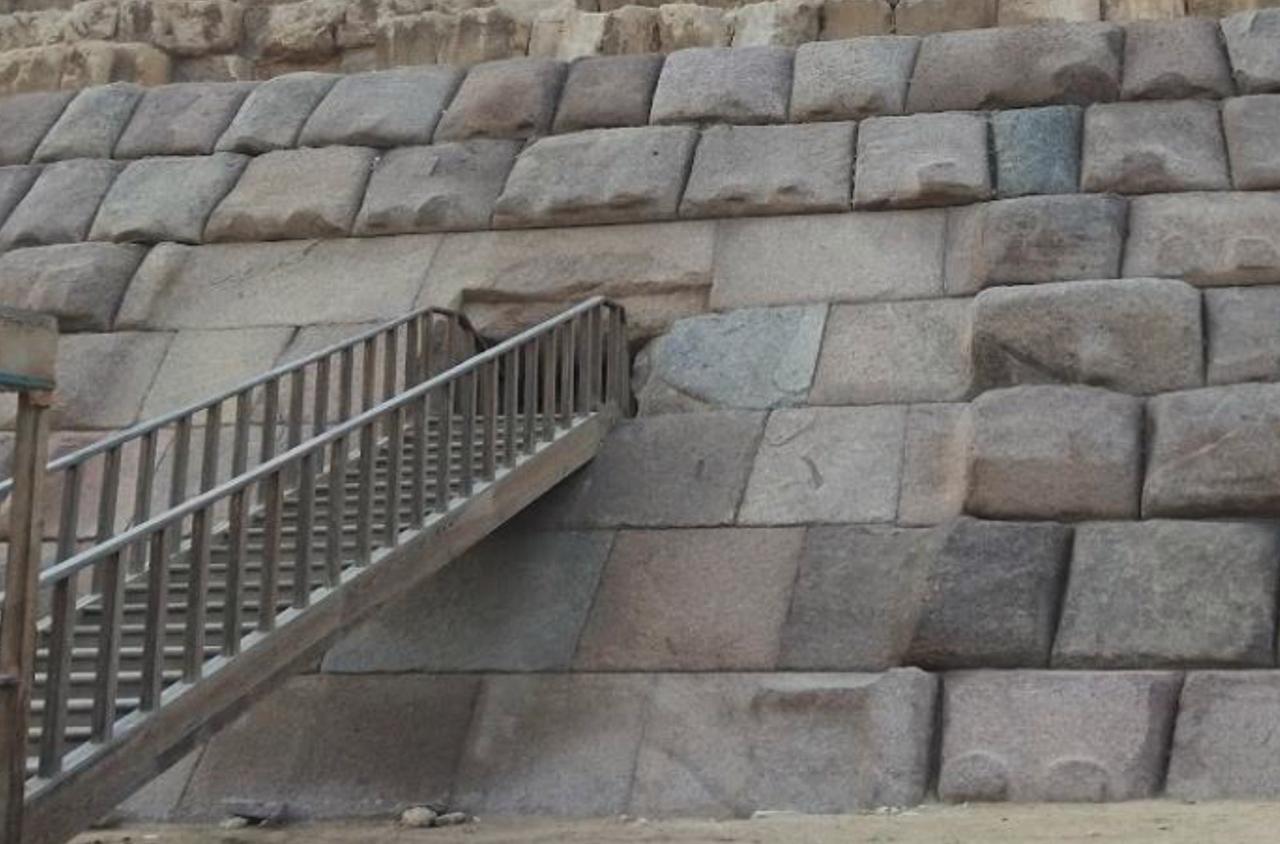
The fused dataset shows two air-filled voids behind the granite casing: one begins about 1.4 m below the surface and measures roughly 1.5 m by 1.0 m; the other starts at about 1.13 m and measures around 0.9 m by 0.7 m.
Both appear slightly inclined and sit directly behind the polished zone.
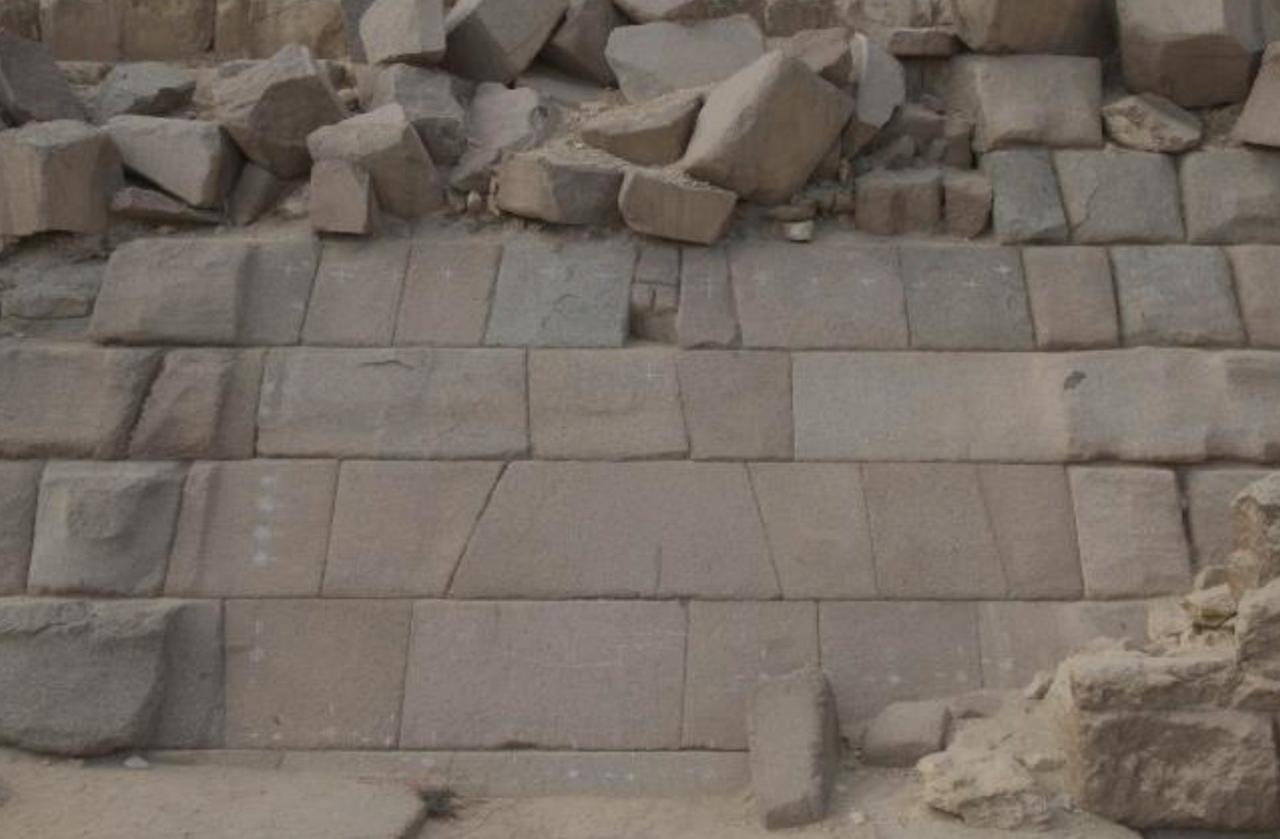
Christian Grosse, professor of non-destructive testing at TUM, said the methodology allows “very precise conclusions” on interior features while protecting the structure, adding that “the hypothesis of another entrance is very plausible” and that the results move the team closer to confirming it.
The study, published in NDT & E International, notes that the present techniques define where the voids begin and their initial dimensions, but not how far they run into the pyramid.
The authors recommend follow-up work—potentially including infrared thermography, micro-gravimetry, or cosmic-ray muography—to map any continuation.